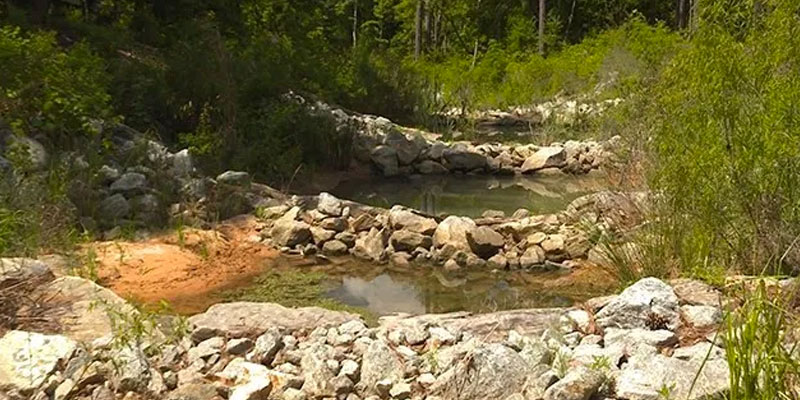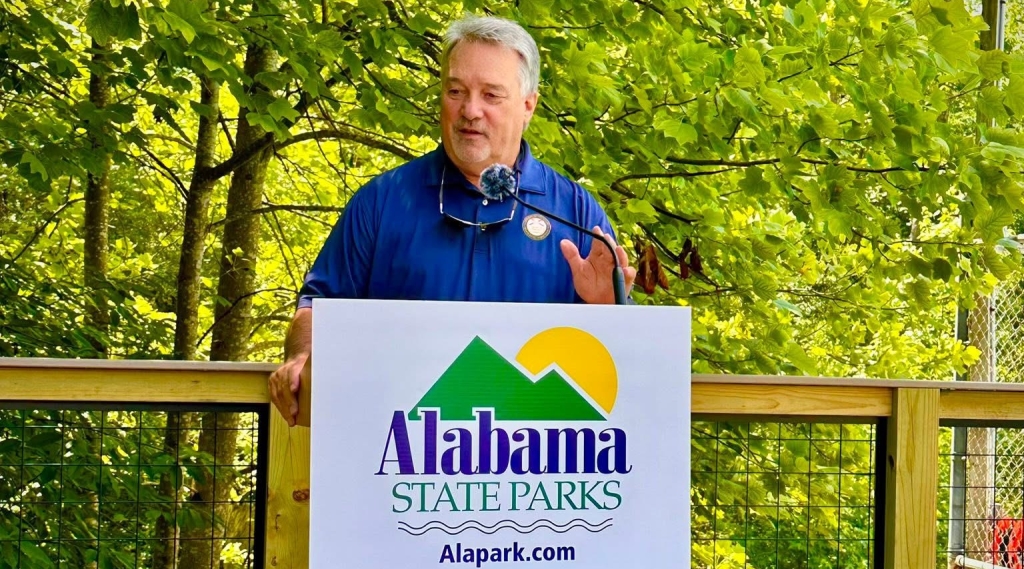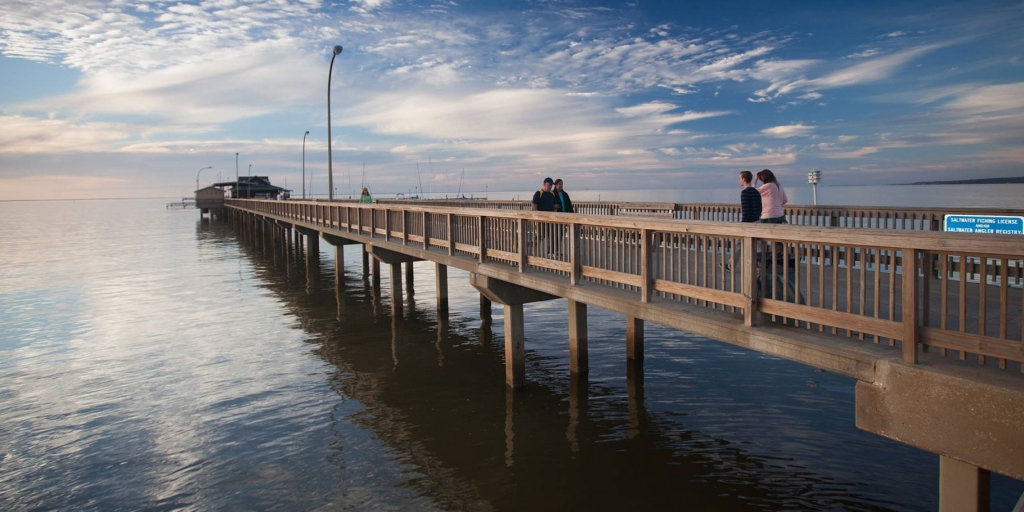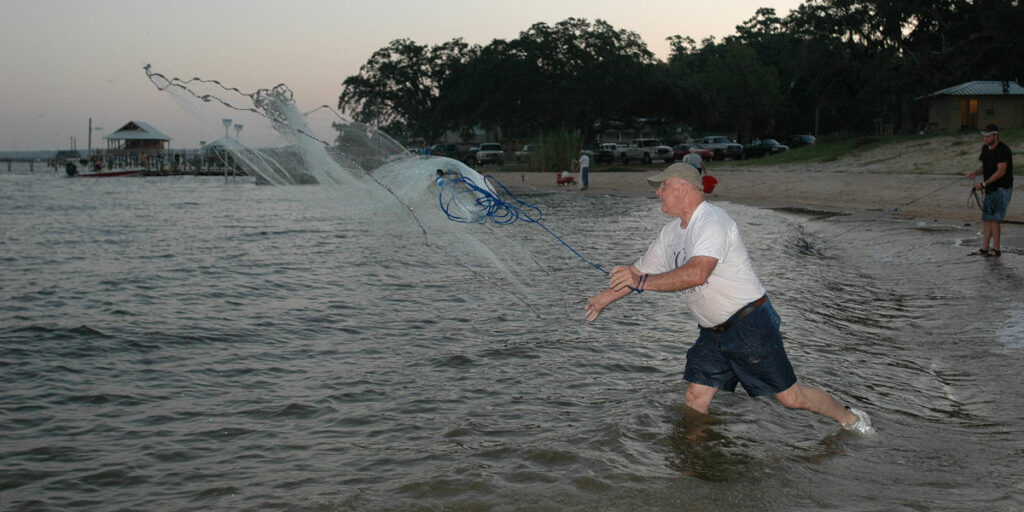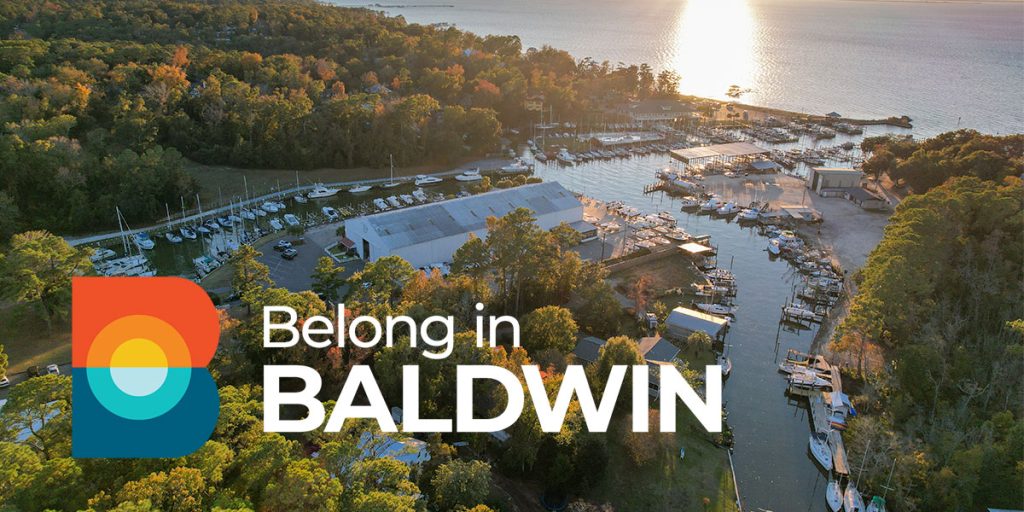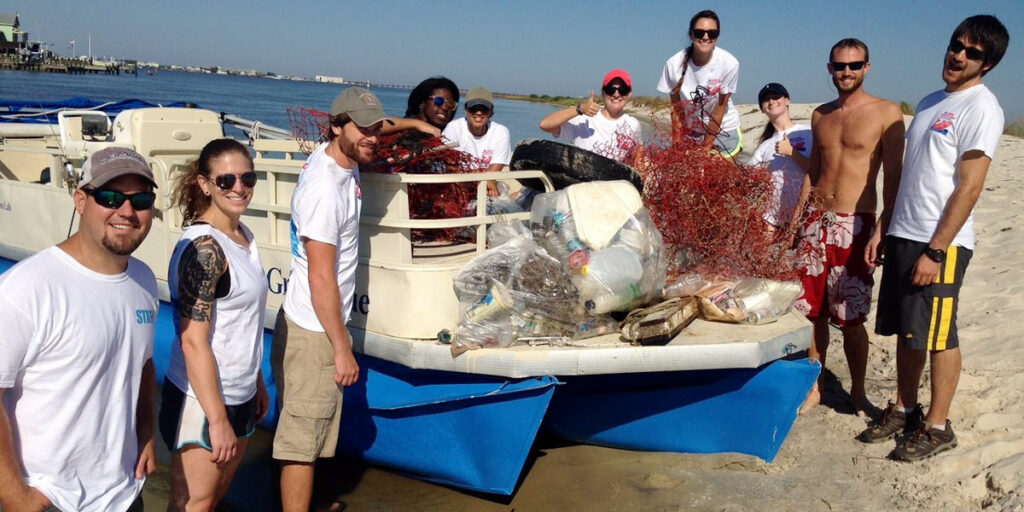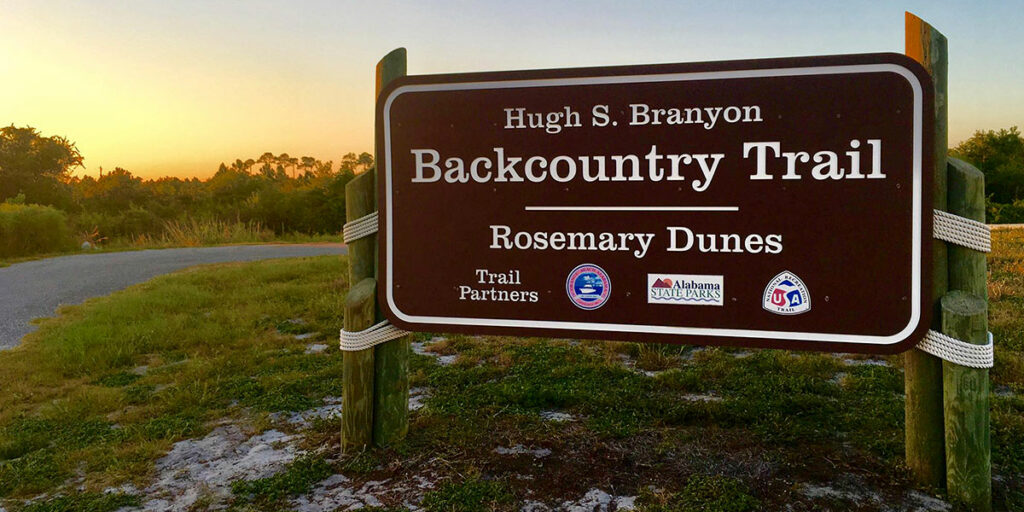The Mobile Bay National Estuary Program (MBNEP) has developed a smart growth plan that communities can use to prevent erosion and protect watersheds.
The plan is based on MBNEP’s successful restoration and conservation efforts at Joe’s Branch in Baldwin County. Joe’s Branch is a tributary to D’Olive Creek.
The area was recently removed from the Alabama Department of Environmental Management’s (ADEM) list of impaired waterbodies thanks in large part to MBNEP’s watershed management plan and the organization’s leadership efforts in uniting cities, communities, and businesses behind the restoration effort.
Mobile Bay NEP develops smart growth plan for communities from Alabama NewsCenter on Vimeo.
Joe’s Branch was first listed by ADEM in 2008 for excess siltation caused by stormwater runoff and stream bank erosion in Spanish Fort and Daphne, which in turn was threatening seagrass beds and fishery habitats of D’Olive and Mobile bays. The Geological Survey of Alabama said at the time the sediment delivered by Joe’s Branch represented the greatest loads from any water body it had ever monitored.
“What we’re dealing with here in the city of Daphne was the perfect storm for stream degradation,” said Jason Kudulis, MBNEP Restoration Project manager. “You’ve got stream topography, you’ve got rolling hills, you’ve got uneven terrain, you’ve got highly erodible soils and then you’ve got precipitation, not only in quantity but in intensity, and so dealing with all of these things causes these streams to really fall apart.”
Ashley Campbell, Environmental Programs manager for Daphne, said the unrestrained stormwater was causing a lot of erosion, threatening roads as well as private and public properties. Campbell reached out to MBNEP for help after leaders in Daphne and Spanish Fort failed to reach a consensus on how to address the problem.
“We needed somebody to be a leader and a partner and bring us all back together,” Campbell said. “So we called Roberta Swann, who is one of my heroes over at the MBNEP, and they came over and we started having meetings. That was the beginning of a dream come true because that one partnership with Spanish Fort, ALDOT, the power companies, Daphne Utilities – all the partners we brought in on that one project called Joe’s Branch Step Pool – that led us to restoring all of D’Olive.”
In 2010, MBNEP published its plan to restore Joe’s Branch and then worked with both cities, as well as business leaders and neighborhood builders, to implement the changes, which included creating rock step pools and retrofitting neighborhood designs to slow the energy of stormwater flow.
“The city (of Daphne) embraced the plan,” Campbell said. “Spanish Fort embraced the plan and we reviewed our regulations. We updated them. We made them better. We enhanced them to protect water quality, to protect wetlands, to protect streams. That one partnership brought all of this about. The plan is what guided us once we got going.”
Kudulis said parts of the plan were adapted from best practices used in mountainous areas of the U.S.
“We’re bringing in techniques that you see in more mountainous streams, such as in the Appalachian Mountains, down here on the coast,” said Kudulis. “We’ve engineered step-pull conveyances to slow this water down and allow some of this sediment to drop before it enters into Mobile Bay.”
Work was completed in 2018, with the restoration of almost two miles of streams. MBNEP said post-restoration monitoring of Joe’s Branch revealed sediment load reductions of more than 90%, prompting ADEM in April 2020 to remove Joe’s Branch from its list of impaired water bodies.
“We did it through watershed management,” Campbell said. “We didn’t just say, ‘We are going to fix this.’ We looked at the watershed, we looked at our problems and then we developed a watershed management plan and that plan guided us.”
As a result of the successful restoration efforts at Joe’s Branch, MBNEP is encouraging cities and neighborhood builders to adapt its watershed management template in the building process, thereby avoiding costly repairs down the road.
“We have worked with the local governments and stakeholders to try to strengthen local subdivision regulations,” Kudulis said. “We bring all of these folks to the table to not just stop the bleeding on these sediment issues but get people to make good decisions – healthy decisions, smart growth decisions moving forward to reduce stormwater impact. Whether that be best management practices for construction in our neighborhoods, it’s tying all of those things together so that we can prevent these situations from coming about again.”
Kudulis said the MBNEP is working with the cities of Daphne and Spanish Fort to make sure these problems don’t return.
“We’re preparing to update the original 2010 D’Olive Management Plan,” Kudulis said. “They already have a vision for what they see as the next steps to continue to build these communities in a great way.”
(Courtesy of Alabama NewsCenter)




